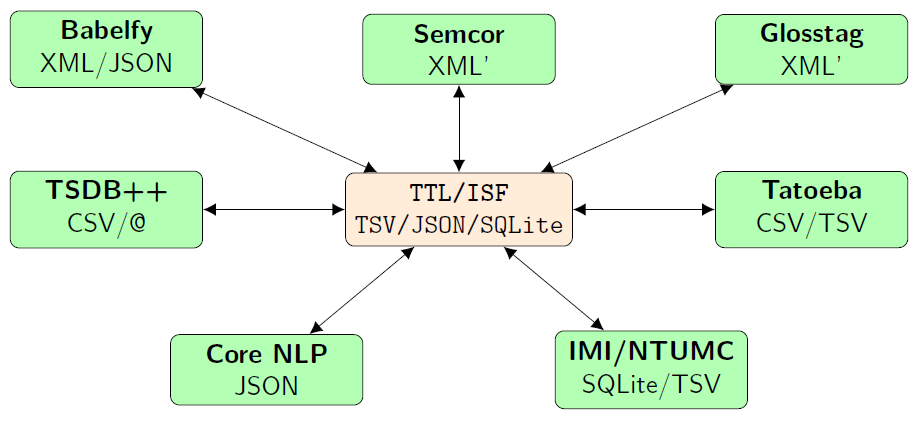texttaglib module¶
TTL (abbreviated from texttaglib) is a Python implementation of the corpus linguistic method
described in Tuan Anh (2019).
TTL was designed to be a robust linguistic documentation framework which is flexible enough
to handle linguistic data from different sources
(Core NLP, ELAN, CoNLL, Semcor, Babelfy, Glosstag Wordnet, Tatoeba project, TSDB++, to name a few).
TTL can be used as a data interchange format for converting to and from different data formats.

Text corpus¶
>>> from speach import ttl
>>> doc = ttl.Document('mydoc')
>>> sent = doc.new_sent("I am a sentence.")
>>> sent
#1: I am a sentence.
>>> sent.ID
1
>>> sent.text
'I am a sentence.'
>>> sent.import_tokens(["I", "am", "a", "sentence", "."])
>>> >>> sent.tokens
[`I`<0:1>, `am`<2:4>, `a`<5:6>, `sentence`<7:15>, `.`<15:16>]
>>> doc.write_ttl()
The script above will generate this corpus
-rw-rw-r--. 1 tuananh tuananh 0 3月 29 13:10 mydoc_concepts.txt
-rw-rw-r--. 1 tuananh tuananh 0 3月 29 13:10 mydoc_links.txt
-rw-rw-r--. 1 tuananh tuananh 20 3月 29 13:10 mydoc_sents.txt
-rw-rw-r--. 1 tuananh tuananh 0 3月 29 13:10 mydoc_tags.txt
-rw-rw-r--. 1 tuananh tuananh 58 3月 29 13:10 mydoc_tokens.txt
TIG - TTL Interlinear Gloss format¶
TIG is a human friendly interlinear gloss format that can be edited using any text editor.
TTL SQLite¶
TTL supports SQLite storage format to manage large scale corpuses.
References¶
Le, T. A. (2019). Developing and applying an integrated semantic framework for natural language understanding (pp. 69-78). DOI:10.32657/10220/49370